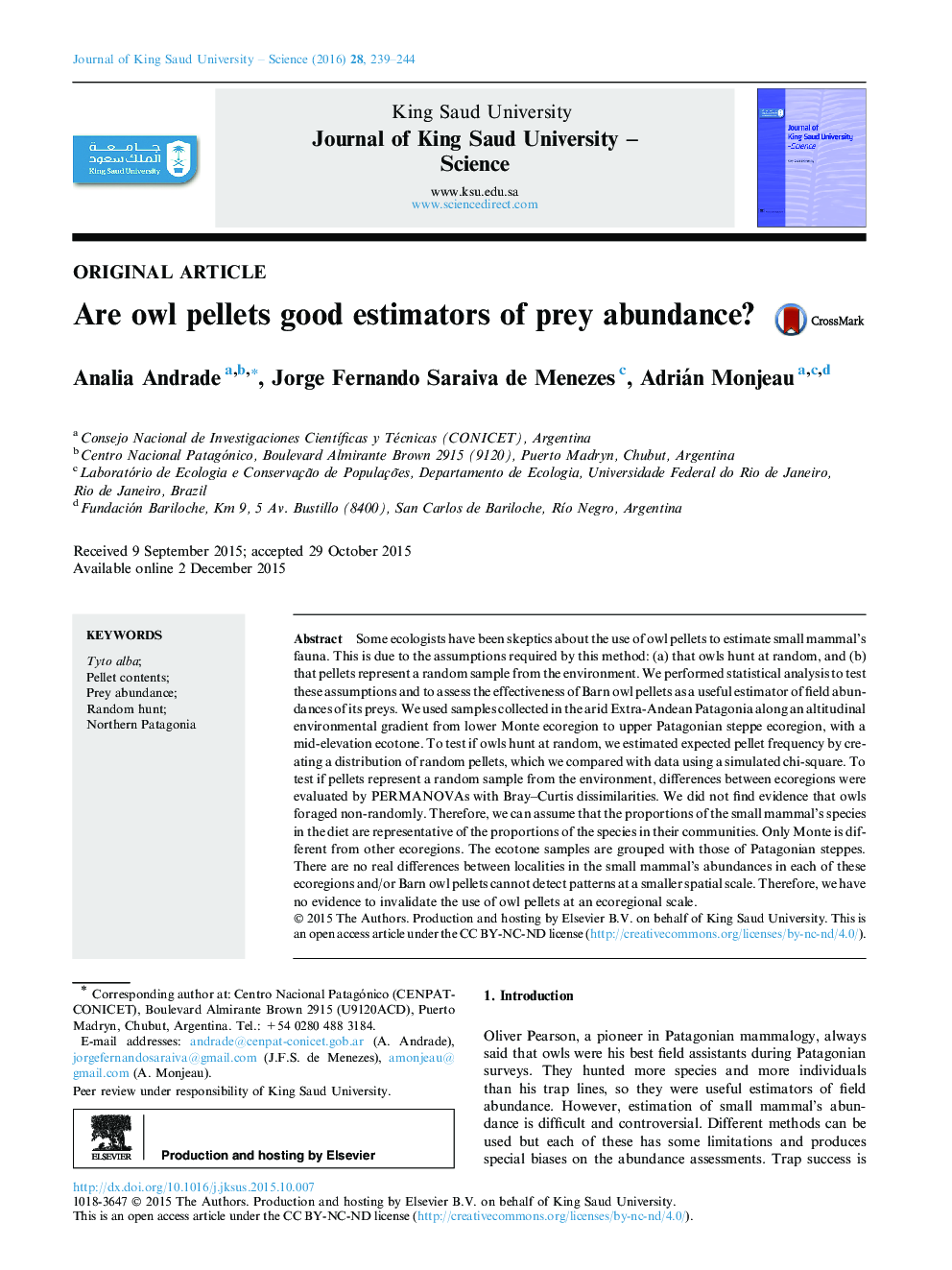| کد مقاله | کد نشریه | سال انتشار | مقاله انگلیسی | نسخه تمام متن |
|---|---|---|---|---|
| 827286 | 1369780 | 2016 | 6 صفحه PDF | دانلود رایگان |
Some ecologists have been skeptics about the use of owl pellets to estimate small mammal’s fauna. This is due to the assumptions required by this method: (a) that owls hunt at random, and (b) that pellets represent a random sample from the environment. We performed statistical analysis to test these assumptions and to assess the effectiveness of Barn owl pellets as a useful estimator of field abundances of its preys. We used samples collected in the arid Extra-Andean Patagonia along an altitudinal environmental gradient from lower Monte ecoregion to upper Patagonian steppe ecoregion, with a mid-elevation ecotone. To test if owls hunt at random, we estimated expected pellet frequency by creating a distribution of random pellets, which we compared with data using a simulated chi-square. To test if pellets represent a random sample from the environment, differences between ecoregions were evaluated by PERMANOVAs with Bray–Curtis dissimilarities. We did not find evidence that owls foraged non-randomly. Therefore, we can assume that the proportions of the small mammal’s species in the diet are representative of the proportions of the species in their communities. Only Monte is different from other ecoregions. The ecotone samples are grouped with those of Patagonian steppes. There are no real differences between localities in the small mammal’s abundances in each of these ecoregions and/or Barn owl pellets cannot detect patterns at a smaller spatial scale. Therefore, we have no evidence to invalidate the use of owl pellets at an ecoregional scale.
Journal: Journal of King Saud University - Science - Volume 28, Issue 3, July 2016, Pages 239–244
